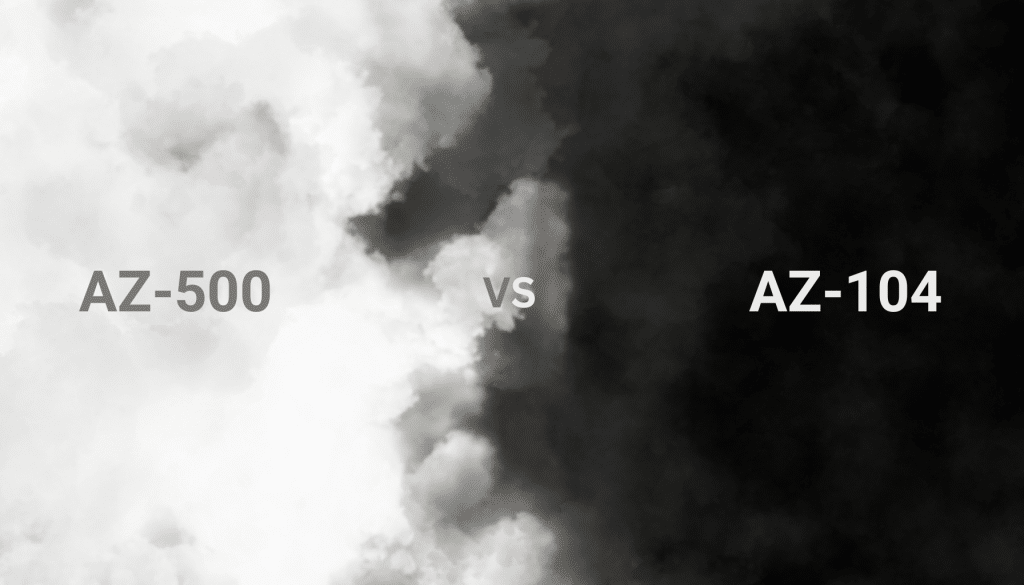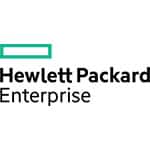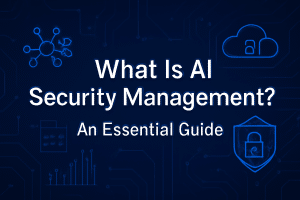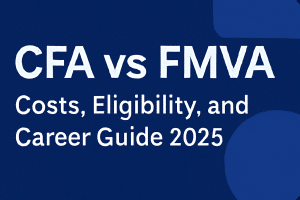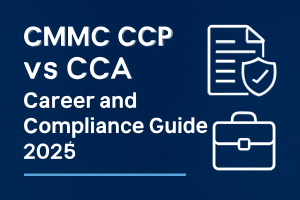Picking the right Azure certification can be tricky, especially when both AZ-500 and AZ-104 seem important. If you’re aiming for a career in cloud security, you might be wondering which one is the better choice.
The short answer? AZ-500 is the best option if you want to specialize in security. But if you’re looking for a broader Azure admin role with some security knowledge, AZ-104 might be a better fit.
In this guide, we’ll break down how these two certifications compare, what kind of jobs they lead to, and which one makes the most sense based on your career goals. Whether you’re starting fresh or already working in IT, this will help you make a smart decision.
Comparison
| Feature | AZ-500 (Microsoft Azure Security Technologies) | AZ-104 (Microsoft Azure Administrator) |
| Target Audience | Security professionals, security engineers | Azure administrators, cloud professionals |
| Focus Area | Security, threat protection, identity & access management | Cloud infrastructure management, resource management |
| Prerequisites | Basic knowledge of Azure security, networking, and identity management | Basic Azure knowledge and experience with cloud infrastructure |
| Exam Cost | $165 USD | $165 USD |
| Difficulty Level | Intermediate to Advanced | Beginner to Intermediate |
| Ideal for | Security engineers, IT security professionals, SOC analysts | Cloud administrators, IT professionals managing Azure environments |
| Job Roles | Azure Security Engineer, Security Administrator, SOC Analyst | Azure Administrator, Cloud Engineer, IT Administrator |
| Certification Validity | 1 year | 1 year |
| Renewal Requirement | Free renewal exam every year | Free renewal exam every year |
AZ-500: Security-Focused, Deep Dive into Cloud Protection
If cloud security is your focus, AZ-500 is where you need to be. This certification proves that you’re not just familiar with Azure, you know how to secure it against attacks, protect identities, and monitor threats before they turn into full-blown breaches.
Microsoft designed this cert for professionals who want to fortify cloud environments, ensuring that businesses can operate with cloud solutions without worrying about security loopholes. Unlike general Azure certifications, AZ-500 is laser-focused on security, covering areas like identity management, threat detection, compliance, and incident response.
Let’s break it down.
What AZ-500 Covers: Core Security Areas
AZ-500 isn’t about deploying virtual machines or setting up networking, it’s about locking them down. If a hacker tries to break into an Azure environment, your job is to stop them cold. For a full walkthrough of the exam structure, domains, and prep strategy, check out our AZ-500 Certification Guide.
Here’s what you’ll master:
Identity & Access Management: Keeping the Wrong People Out
Azure security starts with identity protection. If someone gains unauthorized access, they can steal data, deploy malicious workloads, or bring down entire environments. AZ-500 teaches you how to shut those doors before attackers even knock.
- Azure Active Directory (Azure AD) – The backbone of identity management in Azure. Learn how to:
- Set up single sign-on (SSO) for easy and secure logins.
- Configure conditional access policies to block logins from risky locations.
- Enforce passwordless authentication to eliminate weak passwords.
- Role-Based Access Control (RBAC) – Not everyone needs admin rights. AZ-500 teaches you how to:
- Assign just the right level of access based on job roles.
- Set up least privilege access to limit potential damage if an account gets hacked.
- Monitor access activity to detect unauthorized changes.
- Multi-Factor Authentication (MFA) – Even if passwords get stolen, MFA adds a second layer of security. You’ll learn to:
- Enforce MFA for all users, ensuring no one logs in without secondary verification.
- Use Microsoft Authenticator, SMS, and hardware tokens as authentication methods.
- Set up risk-based MFA, which adapts based on location and device.
- Privileged Identity Management (PIM) – Attackers love targeting admin accounts because they have the most power. AZ-500 teaches you to:
- Limit standing admin privileges, so users only get access when they need it.
- Require approval workflows before granting elevated permissions.
- Automatically revoke access after a set time, reducing exposure.
Without these security controls, a hacker who steals a single password could cause massive damage. With AZ-500 skills, you can set up strong defenses that prevent unauthorized access at every level.
Threat Protection: Stopping Attacks Before They Spread
Security isn’t just about blocking bad actors, it’s about detecting threats early and shutting them down fast. That’s where threat protection comes in.
- Microsoft Defender for Cloud – Your first line of defense. With AZ-500, you’ll learn to:
- Enable real-time threat detection for virtual machines, databases, and apps.
- Analyze security recommendations to fix weak points in your cloud setup.
- Use advanced threat analytics to spot patterns of cyberattacks.
- Firewalls, Encryption, and Network Security – Attackers don’t just walk in through stolen credentials; they also exploit weak network configurations. AZ-500 covers:
- Azure Firewall – Controlling traffic and blocking malicious connections.
- Network Security Groups (NSGs) – Restricting access at the subnet level.
- DDoS Protection – Preventing attackers from overloading cloud resources.
- Just-In-Time (JIT) Access – Hackers love finding open ports. With JIT, you’ll:
- Keep management ports closed unless explicitly needed.
- Grant access only for a limited time, reducing the attack surface.
- Automatically revoke access after use, preventing lingering security risks.
Without these protections, an attacker could gain access to a network and move freely without detection. But with threat detection, firewalls, and just-in-time access, security risks are reduced significantly.
Security Operations: Monitoring, Detecting, and Responding
Even with tight access control and strong defenses, you need constant monitoring to catch threats that slip through. AZ-500 teaches you to run a security operations center (SOC) that actively watches, detects, and responds to security events.
- Azure Sentinel (SIEM & SOAR) – Security analytics and automated response. Learn how to:
- Collect logs from multiple sources, including Azure services, firewalls, and threat feeds.
- Use AI-driven threat intelligence to identify attacks before they escalate.
- Set up automated security playbooks to take action without manual intervention.
- Log Monitoring & Analysis – Visibility is key. You’ll master:
- Azure Monitor – Keeping an eye on performance and security issues.
- Log Analytics & KQL – Digging deep into security logs to trace suspicious activity.
- Alerting & Notifications – Setting up real-time alerts so security teams can respond fast.
- Security Playbooks – Pre-planned responses to threats. With AZ-500, you’ll:
- Automate responses for known attack patterns.
- Trigger incident investigations when threats are detected.
- Reduce response time, so threats are neutralized before they cause damage.
Without a proper security monitoring system, a company might not even know they’re under attack until data is stolen. With AZ-500 expertise, you can detect, investigate, and shut down attacks before they spread.
Compliance & Governance: Keeping It Secure and Legal
Security isn’t just about keeping attackers out, it’s also about following industry regulations. If a company fails compliance audits, it could face huge fines and legal trouble.
- Security Policies & Compliance Frameworks – Learn to:
- Enforce Azure Security Center policies to meet compliance requirements.
- Align with GDPR, ISO 27001, NIST, and CIS benchmarks.
- Set up automated compliance checks, so companies stay audit-ready.
- Encryption & Key Management – Securing sensitive data. AZ-500 covers:
- Azure Key Vault – Storing and managing encryption keys securely.
- Transparent Data Encryption (TDE) – Protecting databases from unauthorized access.
- Disk Encryption – Ensuring cloud VMs are fully protected.
Companies that handle healthcare, financial, or customer data must comply with strict security laws. With AZ-500, you learn how to keep everything locked down while staying compliant with legal standards.
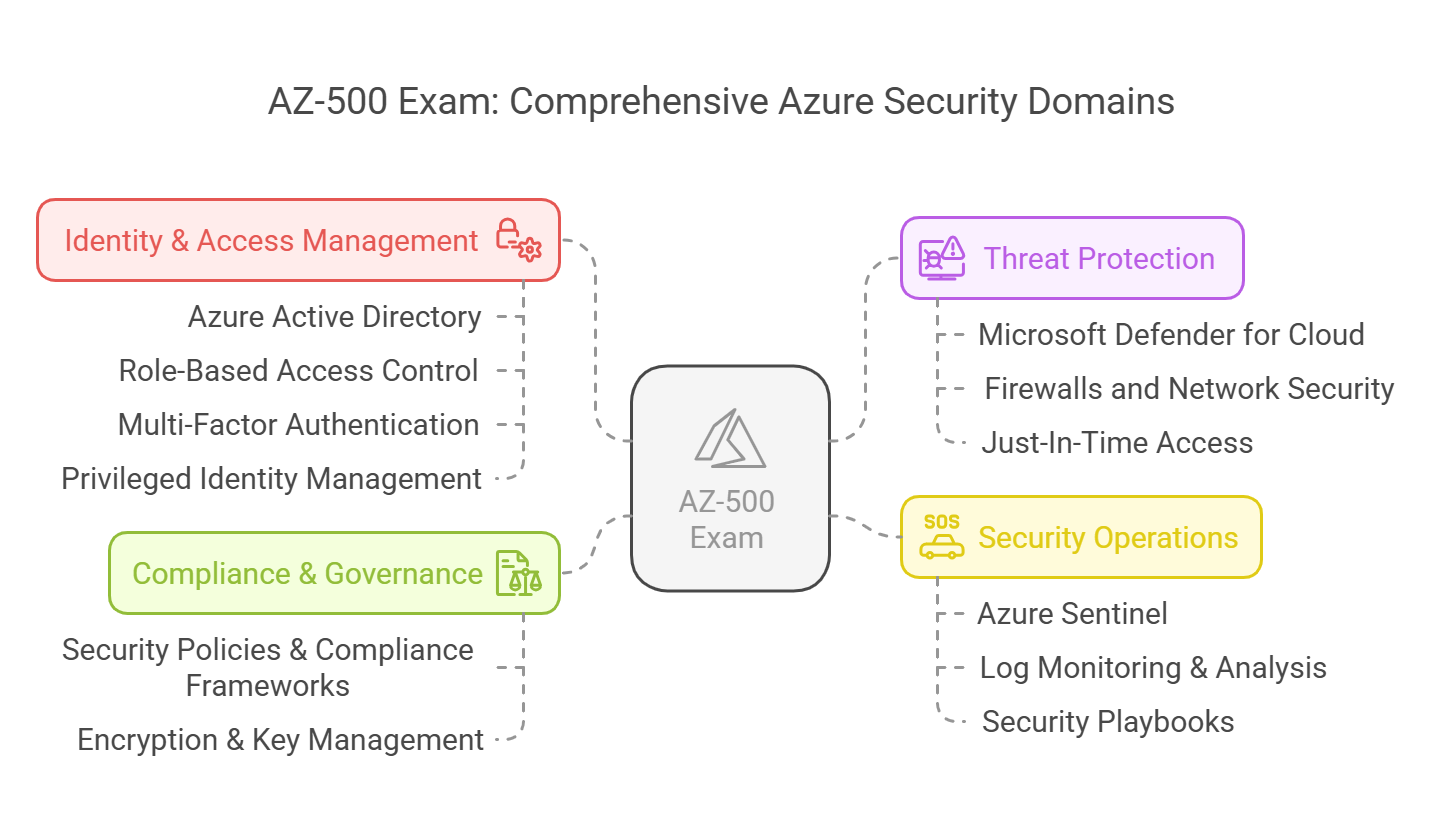
Who Should Get AZ-500?
If security is your main focus, AZ-500 is a must-have. This cert is ideal for:
- Cybersecurity engineers securing cloud environments.
- SOC analysts monitoring security events and responding to threats.
- Cloud security architects designing secure Azure frameworks.
- IT professionals moving into security and needing cloud-specific expertise.
If you want to be the person who protects Azure systems, this is the certification that proves you can do it. It’s not a general Azure cert—it’s about stopping cyber threats, enforcing security, and ensuring compliance.
For anyone serious about a career in cloud security, AZ-500 is the go-to certification and Cert Empire’s AZ-500 exam dumps can help you prepare with real-world practice questions.
AZ-104: The Essential Admin Pathway with Some Security Aspects
If you’re aiming for a solid foundation in Azure administration, AZ-104 is the certification that gets you there. It’s designed for those who want to manage Azure resources, networks application security, and identity services, making sure cloud environments run smoothly and efficiently.
It’s designed for those who want to manage Azure resources, networks, and identity services, making sure cloud environments run smoothly and efficiently. If you’re considering this path, don’t miss the detailed AZ-104 Certification Guide for exam insights and role alignment.
Unlike AZ-500, which focuses deeply on security, AZ-104 covers a bit of everything, from virtual machines and storage to networking and access management. It does touch on security, but not at the expert level that AZ-500 requires. This cert is more about running and maintaining Azure services rather than locking them down.
What AZ-104 Covers: Core Areas of Cloud Administration
AZ-104 is about making sure an Azure environment is set up, configured, and working properly. If you’re in charge of cloud operations, this is your go-to certification.
Azure Infrastructure: Setting Up and Managing Cloud Resources
Cloud administrators deploy and manage Azure workloads, ensuring businesses have scalable, reliable, and cost-efficient environments. AZ-104 teaches you how to:
- Deploy and manage virtual machines (VMs) – Choosing the right VM types, scaling up/down, and ensuring high availability.
- Configure storage solutions – Managing Azure Blob, File, and Disk Storage, setting up storage redundancy, and handling data security.
- Optimize resource performance – Scaling workloads based on demand, implementing auto-scaling, and monitoring usage.
The focus here is keeping things running smoothly, ensuring that workloads are optimized and cost-efficient without unnecessary resource consumption.
Networking: Connecting Azure Services Securely and Efficiently
Networking is one of the most critical areas for an Azure administrator. If networks aren’t set up properly, apps won’t communicate, security risks increase, and performance suffers.
AZ-104 covers:
- Configuring Virtual Networks (VNets) – Setting up subnets, private endpoints, and traffic rules to keep communication secure.
- Implementing Network Security Groups (NSGs) – Blocking or allowing specific traffic based on rules.
- Managing Load Balancers – Distributing traffic across multiple servers to ensure performance and uptime.
- Configuring VPN and ExpressRoute – Connecting on-premises environments with Azure securely.
Without proper networking, Azure services won’t function efficiently. This part of AZ-104 ensures that everything communicates securely and without performance bottlenecks.
Identity & Access Management: Controlling Who Can Do What
Even though security isn’t AZ-104’s primary focus, identity management plays a key role. If you don’t control who has access to what, security risks go up fast.
AZ-104 includes:
- Managing Azure Active Directory (Azure AD) – Handling users, groups, and authentication.
- Implementing Role-Based Access Control (RBAC) – Assigning permissions based on job roles, ensuring least privilege access.
- Configuring Conditional Access Policies – Setting rules for secure logins based on location, device, and risk level.
- Integrating On-Premises with Azure AD – Syncing local users and groups to enable hybrid environments.
While this isn’t full-scale cybersecurity, it does ensure that Azure admins understand how to manage user identities securely. This is where AZ-104 and AZ-500 overlap slightly, but AZ-500 dives deeper into security policies, monitoring, and advanced threat protection.
Monitoring & Backup: Keeping Services Available and Recoverable
Admins don’t just set up services, they also need to make sure they stay up and running. AZ-104 teaches:
- Azure Monitor & Log Analytics – Keeping track of system health, detecting performance issues, and setting up alerts.
- Backup & Disaster Recovery – Configuring Azure Backup and Site Recovery to ensure data protection and business continuity.
- Service Health & Troubleshooting – Using built-in tools to identify and fix Azure service issues.
If a VM crashes or a database fails, an Azure admin needs to act fast. This part of AZ-104 ensures that you can restore services quickly and keep downtime to a minimum.
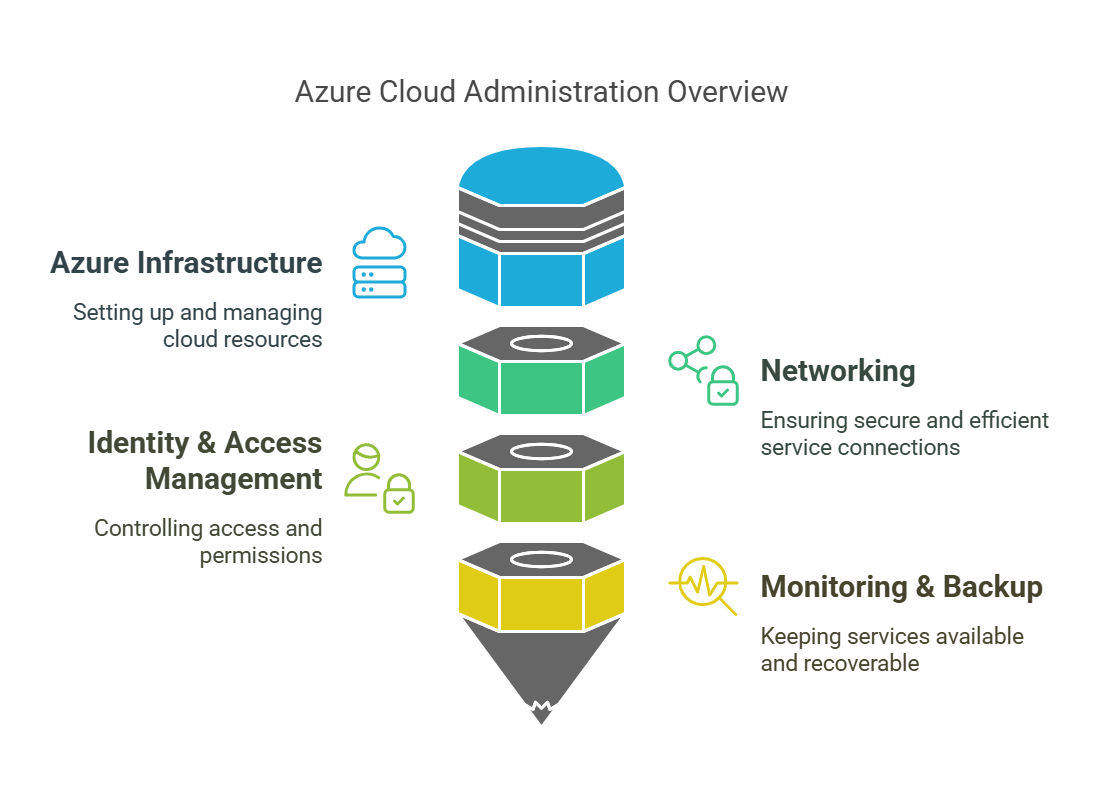
Where Security Fits in AZ-104
While AZ-104 does cover security aspects, it’s not a security certification. Here’s how security is handled in AZ-104 compared to AZ-500:
| Security Topic | AZ-104 (Admin Focus) | AZ-500 (Security Focus) |
| Identity & Access Management | Covers user roles, permissions, and authentication settings. | Goes deeper into privileged identity management (PIM), conditional access rules, and MFA security hardening. |
| Threat Protection | Introduces basic security features like NSGs, firewalls, and Defender for Cloud. | Covers full-scale attack prevention, detection, and response strategies. |
| Monitoring & Compliance | Focuses on log analytics and service monitoring. | Involves SIEM, SOAR, security automation, and compliance frameworks. |
| Data Security & Encryption | Covers storage encryption and backup security. | Involves key management, advanced encryption policies, and forensic analysis. |
The main takeaway? If you need some security knowledge but your role is more admin-focused, AZ-104 is enough. But if security is your priority, AZ-500 is the better fit.
Who Should Get AZ-104?
AZ-104 is designed for those who manage Azure environments daily. It’s ideal for:
- Cloud administrators responsible for configuring and maintaining Azure services.
- IT support engineers who handle Azure operations and troubleshooting.
- System engineers who work with virtual machines, networking, and cloud resources.
- Network engineers who need to manage Azure connectivity and security.
If your goal is to become an Azure administrator, AZ-104 is the right certification. But if you’re planning to focus on cloud security, then AZ-500 makes more sense And if AZ-104 is your starting point, AZ-104 exam dumps from Cert Empire offer the exact prep you need to pass on your first attempt.
AZ-104 vs. AZ-500: Which One is Better for You?
If you’re deciding between AZ-104 and AZ-500, the choice comes down to your career path.
- Choose AZ-104 if you:
- Want to work as an Azure Administrator.
- Need broad knowledge of Azure infrastructure.
- Will be responsible for deploying, managing, and troubleshooting cloud services.
- Choose AZ-500 if you:
- Want to specialize in cloud security.
- Will be working in cybersecurity roles like security engineer or analyst.
- Need to understand threat protection, compliance, and incident response.
Some professionals take both certifications—starting with AZ-104 to understand Azure infrastructure, then moving to AZ-500 to gain security expertise. But if your end goal is security, you can skip AZ-104 and go straight for AZ-500.
Either way, both certifications help build valuable Azure skills—it’s just a matter of whether you want to focus on running Azure or securing data for it.
Comparing the Job Roles: What Kind of Careers Do These Certs Unlock?
The certification you choose directly affects the type of job roles you qualify for. While AZ-500 and AZ-104 both deal with Azure, they prepare you for very different career paths.
If your goal is to secure cloud environments, AZ-500 is the way to go. But if you’re looking to manage Azure infrastructure, AZ-104 is the better fit.
Let’s break down what kind of jobs you can expect from each certification.
What You Can Expect with AZ-500
AZ-500 is for security professionals who focus on protecting Azure environments maintaining cloud applications. If you’re aiming for a career in cybersecurity, this certification opens doors to high-demand security roles in cloud environments.
1. Security Engineer (Cloud Security Specialist)
- What You’ll Do:
- Implement firewalls, threat detection, and endpoint protection.
- Set up identity and access controls to restrict unauthorized access.
- Respond to security incidents, ensuring breaches are contained.
- Monitor Azure Security Center, Microsoft Defender, and SIEM solutions for potential threats.
- Who’s Hiring?
- Tech giants (Microsoft, Amazon, Google)
- Cybersecurity firms (CrowdStrike, Palo Alto Networks)
- Banks & financial institutions (where data security is critical)
- Government agencies (securing national infrastructure)
- Salary Expectations:
- Entry-level: $90,000 – $110,000 per year
- Mid-level: $120,000 – $150,000 per year
- Senior roles: $160,000+ per year
2. Cybersecurity Consultant
- What You’ll Do:
- Design cloud security architectures for companies moving to Azure.
- Conduct security risk assessments and recommend security solutions.
- Ensure businesses meet compliance standards like ISO 27001, NIST, and GDPR.
- Work with security teams to prevent, detect, and respond to threats.
- Who’s Hiring?
- Consulting firms (Accenture, Deloitte, PwC)
- Large enterprises with dedicated cloud security teams
- Cloud service providers looking for security specialists
- Salary Expectations:
- Entry-level: $100,000 – $120,000 per year
- Mid-level: $130,000 – $160,000 per year
- Senior roles: $170,000+ per year
3. Cloud Security Architect
- What You’ll Do:
- Develop security frameworks for Azure cloud environments.
- Create secure access policies and automated security enforcement.
- Work with DevOps teams to ensure secure cloud application deployment.
- Integrate SIEM solutions (like Azure Sentinel) for advanced threat detection.
- Who’s Hiring?
- Enterprise companies migrating to Azure
- Cloud service providers needing security experts
- Government & defense organizations focused on cloud security
- Salary Expectations:
- Mid-level: $140,000 – $170,000 per year
- Senior roles: $180,000 – $200,000+ per year
AZ-500 makes you highly valuable in cybersecurity roles. With cyberattacks increasing every year, companies desperately need experts who can secure cloud environments—making AZ-500 certified professionals some of the most in-demand IT experts today.
Where AZ-104 Can Take You
AZ-104 is for Azure administrators who manage cloud services, networking, and identity management. This certification prepares you for hands-on technical roles where you’ll be responsible for keeping Azure environments running smoothly.
1. Azure Administrator
- What You’ll Do:
- Deploy and manage Azure virtual machines (VMs), databases, and storage.
- Configure Azure networking, including VNets, subnets, and load balancers.
- Monitor Azure performance and troubleshoot service issues.
- Manage user access and security settings within Azure Active Directory (AD).
- Who’s Hiring?
- Companies moving their infrastructure to Azure
- Cloud consulting firms that help businesses set up Azure environments
- IT departments of large organizations running Azure workloads
- Salary Expectations:
- Entry-level: $80,000 – $100,000 per year
- Mid-level: $110,000 – $130,000 per year
- Senior roles: $140,000+ per year
2. Cloud Support Engineer
- What You’ll Do:
- Troubleshoot Azure services when things go wrong.
- Provide technical support for cloud-based applications and networks.
- Work with developers to optimize cloud workloads for performance and reliability.
- Assist in security compliance and cloud best practices.
- Who’s Hiring?
- Cloud providers (Microsoft, AWS, Google)
- Tech companies offering cloud-based services
- IT service providers needing Azure support specialists
- Salary Expectations:
- Entry-level: $70,000 – $90,000 per year
- Mid-level: $100,000 – $120,000 per year
- Senior roles: $130,000+ per year
3. Systems Engineer
- What You’ll Do:
- Set up and configure Azure infrastructure for organizations.
- Optimize cloud storage and networking performance.
- Implement security policies and user access controls.
- Automate Azure deployments using PowerShell and ARM templates.
- Who’s Hiring?
- Enterprises moving to the cloud
- Managed IT service providers handling cloud operations
- Government and healthcare organizations needing secure cloud systems
- Salary Expectations:
- Entry-level: $80,000 – $100,000 per year
- Mid-level: $110,000 – $130,000 per year
- Senior roles: $140,000+ per year
While AZ-104 professionals do handle some security tasks, they’re primarily focused on keeping Azure services running efficiently. If your goal is to be an Azure administrator, this is the certification to get.
AZ-500: A Deep Security Challenge
AZ-500 is a technical security certification that requires you to understand and implement complex security measures within Azure. It’s not just about knowing what security tools exist—it’s about applying them in real-world scenarios.
Why AZ-500 is Harder Than It Looks
- Advanced Security Concepts – You’re not just setting up security; you’re building, managing, and defending against attacks. Expect to deal with:
- Identity and Access Management (IAM) – Implementing Azure AD, Conditional Access, RBAC, PIM, and MFA.
- Threat Protection – Configuring Microsoft Defender for Cloud, SIEM, and Sentinel for advanced threat detection.
- Network Security – Managing firewalls, encryption, and Just-In-Time (JIT) access.
- Compliance & Governance – Ensuring GDPR, ISO 27001, and other regulations are met.
- Practical Knowledge is Essential – This exam is not just theory—you need hands-on experience securing Azure environments. If you don’t actively work with Azure Security Center, Defender, and Sentinel, you’ll struggle with scenario-based questions.
- Real-World Scenarios and Threat Responses – The exam often presents case studies where you must determine:
- How to secure an Azure workload against a specific attack type.
- Which security control to apply in a given scenario.
- How to analyze security logs to detect suspicious activity.
- Time Management is Crucial – Many scenario-based questions require detailed analysis, and the exam time is limited. Candidates often find it difficult to complete all questions in time.
- Prior Knowledge Needed – It’s not recommended to take AZ-500 unless you already have experience with Azure administration and basic security principles. If security is new to you, this exam will feel overwhelming.
How to Prepare for AZ-500
- Hands-on Practice – Set up Azure Security Center, Microsoft Defender, and Azure Sentinel in a test environment.
- Understand Attack Scenarios – Learn how attackers exploit cloud environments and how to stop them.
- Focus on Compliance & Governance – Many questions revolve around meeting security regulations.
- Study Microsoft Docs & Labs – Microsoft provides free learning paths that align with the exam.
- Practice with Mock Exams – Since the exam involves scenario-based questions, practice tests help develop problem-solving strategies.
Difficulty Level: High
AZ-500 is considered a tough certification, especially if you don’t have prior security experience. If you’re already familiar with cybersecurity principles, it’s more manageable, but it still requires deep Azure security knowledge.
AZ-104: Not Easy, but More Admin-Oriented
AZ-104 is not a simple exam, but it’s generally less challenging than AZ-500 because it focuses on administration rather than security. However, it still requires broad technical knowledge across multiple Azure services.
What Makes AZ-104 Challenging?
- Covers Many Azure Services – Unlike AZ-500, which focuses solely on security, AZ-104 requires knowledge of:
- Virtual Machines (VMs) – Deploying, scaling, and managing workloads.
- Storage Solutions – Handling Azure Blob, File, and Disk storage.
- Networking – Configuring VNets, NSGs, load balancers, and VPNs.
- Azure Active Directory – Managing users, roles, and authentication policies.
- Requires Understanding of Cloud Networking – If you don’t have networking experience, configuring VNets, subnets, and hybrid connections can be difficult.
- Exam Length and Question Variety – The exam includes:
- Multiple-choice questions (some with multiple correct answers).
- Drag-and-drop configuration tasks.
- Scenario-based questions where you apply the right solution.
- Azure CLI and PowerShell Questions – While the exam doesn’t require coding, you should know how to execute Azure CLI and PowerShell commands for administration tasks.
- Concepts Must Be Memorized – Unlike AZ-500, where logical thinking and security expertise help answer questions, AZ-104 requires memorization of specific configurations and settings.
How to Prepare for AZ-104
- Get Hands-on Experience – Set up an Azure free account and practice deploying VMs, storage, and networking.
- Master Networking Basics – Understand IP addressing, VPNs, and Azure firewall rules.
- Know Azure AD Inside Out – Managing users, roles, and authentication settings is a big part of the exam.
- Use Microsoft Learn & Azure Docs – Microsoft provides free study resources aligned with the exam objectives.
- Take Mock Tests – Practice exams will help you understand exam format and time management.
Difficulty Level: Moderate to High
AZ-104 is challenging but more structured and predictable compared to AZ-500. It’s easier for beginners, but still requires technical expertise across various Azure services.
AZ-500 vs. AZ-104: Which Exam is Harder?
| Exam | Focus | Difficulty Level | Who Should Take It? |
| AZ-500 | Cloud Security & Compliance | High | Security engineers, cloud security specialists, and SOC analysts. |
| AZ-104 | Azure Administration & Networking | Moderate to High | IT administrators, cloud engineers, and network specialists |
Salary Expectations: Does AZ-500 Pay More Than AZ-104?
If you’re considering AZ-500 vs AZ-104, salary is a big factor. The good news? Both certifications lead to high-paying jobs, but AZ-500 tends to pay more due to the growing demand for cloud security professionals.
Companies are willing to pay a premium for security specialists because cyber threats are increasing. While Azure administrators (AZ-104 certified) are still in demand, their salaries are generally lower than security-focused roles.
Let’s break it down by salary ranges, experience levels, and job market demand.
AZ-500 vs AZ-104 Salary Comparison Across Different Regions
The salaries for AZ-500 and AZ-104 certified professionals depend on region, experience, and company size. Below is a global salary comparison based cloud data and on real-world job postings and salary surveys.
| Country | AZ-500 Average Salary | AZ-104 Average Salary |
| United States | $120,000 – $180,000 | $90,000 – $130,000 |
| Canada | CAD 110,000 – 150,000 | CAD 80,000 – 110,000 |
| United Kingdom | £75,000 – £110,000 | £50,000 – £85,000 |
| Australia | AUD 130,000 – 180,000 | AUD 95,000 – 130,000 |
| India | ₹15 LPA – ₹35 LPA | ₹8 LPA – ₹18 LPA |
| Germany | €80,000 – €120,000 | €60,000 – €90,000 |
Why Does AZ-500 Pay More?
- Cloud Security Experts Are in High Demand – Cybersecurity threats are increasing, and companies need skilled professionals who can secure cloud environments.
- Fewer Professionals Hold AZ-500 – Many IT pros take AZ-104 first, meaning there are fewer AZ-500-certified experts, leading to higher salaries.
- Security Roles Carry More Responsibility – A security breach can cost millions. Companies pay top dollar to ensure they have strong security teams.
While AZ-104 jobs are still well-paid, they don’t offer the same salary growth potential as security-focused roles.
Why AZ-500 Jobs Are Growing Faster
- Security breaches are becoming more frequent – Companies are losing millions to cyberattacks, making security hiringurgent.
- Regulatory compliance is getting stricter – Many industries require security professionals to meet legal standards (GDPR, HIPAA, ISO 27001).
- There are fewer AZ-500-certified professionals – Many IT pros focus on administration rather than security, creating a skill gap.
Does This Mean AZ-104 is Less Valuable?
Not at all. AZ-104 jobs are stable and in demand, but they are more common, meaning salaries are not as competitive as AZ-500. However, if you love cloud computing or infrastructure management, AZ-104 is still a great career choice.
Final Verdict: Which One Pays More and Has Better Career Growth
When deciding between AZ-500 and AZ-104, it comes down to career goals and earning potential. AZ-500 pays more and offers better long-term growth because cloud security is a top business priority, and there’s a shortage of skilled security professionals. If you’re aiming for high salaries, job security, and leadership roles in cybersecurity, AZ-500 is the smarter choice. However, AZ-104 remains valuable for those who prefer Azure administration, networking, and infrastructure management, just don’t expect security-level salaries without further specialization. Whichever path you choose, preparation is key, and Cert Empire provides the best exam dumps to help you pass your certification on the first try.
FAQs
Is AZ-500 harder than AZ-104?
Yes, AZ-500 is more challenging because it focuses on advanced security concepts, threat detection, and compliance, while AZ-104 covers broader Azure administration tasks.
Do I need AZ-104 before taking AZ-500?
No, AZ-104 is not a prerequisite for AZ-500, but having a basic understanding of Azure administration helps before diving into security-focused topics.
Which certification is better for a beginner in cloud security?
AZ-500 is the best choice for security, but if you’re new to Azure, it’s easier to start with AZ-104 to build foundational knowledge.
Does AZ-500 require coding knowledge?
No, you don’t need coding skills, but basic scripting with PowerShell and Azure CLI can help with automation and managing security controls and configurations.
Can I get a job with just AZ-500 or AZ-104?
Yes, both certs can open doors to entry-level cloud roles, but practical experience alongside the certification increases your chances of landing a job.
Which exam has a higher passing rate?
AZ-104 generally has a higher passing rate since it covers broader but simpler topics, whereas AZ-500 requires deep security expertise, making it harder to pass.
Last Updated on by Team CE

